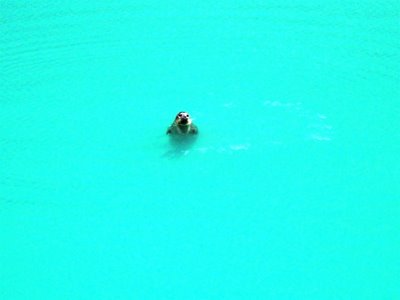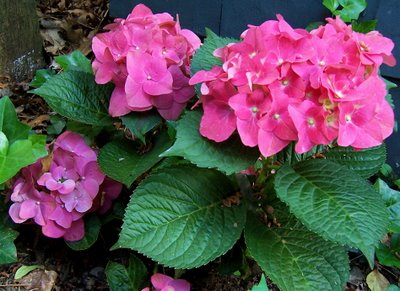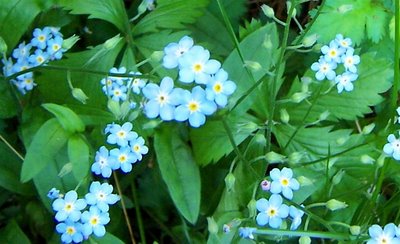




6-23-06 GLACIER BAY: We arrived at the entrance to Glacier Bay National Park at four am to pick up a ranger/guide at six am for the day’s voyage. We cruised north in Glacier Bay from the entrance almost to the Canadian border, about 80 miles, and back. Our first waypoint was South Marble Is. It is a polished rock in the middle of the bay and isolated from land based predators and so home to gulls, cormorants, murres, puffins and sealions. Miraculously, the day was dry with a bit of sun, but cold from the ice and from the ship’s apparent wind.
Glacier bay is a fairly narrow fjiord with steep sides periodic branching and hanging valley and another glacier in each valley and branch. We saw the same progression of vegetation and water color changes we previously saw.
At Tidal Inlet we picked up two Orcas and followed them for a while southward along the shore. They, like the other whales we have seen, dive and stay down several minutes and then surface and blow three or four times and then dive back down. One of them, a mature male, has a scar on its dorsal fin near the top of the trailing edge. The scar was shown in a book about that pack when they were in California waters. The other orca was either a female of immature male.
After we dropped the Orcas, we went past an igneus intrusion called Gloomy Point which is a shear surface rising from the bay with small shelves and scattered patches of greenery. We saw Mountain Goats, cream colored and high up on the cliffs, mostly lying around, perhaps cud chewing. There were some isolated goats and a herd of about ten in one cluster. Quite content to be on the face of the cliff.
Just after leaving Gloomy Point, we saw a moose, anterless, walking along a distant beach and were sneaking up on it when we saw a mama brown bear with two cubs near the water climbing a different formation. The cubs were wandering around and wrestling with each other. The mom would turn around and scold them and they would scurry up to her. We watched them climb the whole face and go around the top. Orcas, goats, moose and grizzleys, it was an amazing hour!
The destination glaciers, Margerie and Grand Pacific, are at the north end of the bay. Margerie is more active, bluer, fissured with seracs and calving six feet of ice daily. The other is covered with a thick terminal moraine giving it a brown appearance and is actually growing. Almost all the other glaciers are receding. We saw a few calvings, the ice bergs and ice floe with a few Harbor Seals and new pups. There were hundred of Kittiwake gull nests on the sides of the cliffs and lots of birds on the water around the glacier. When the glacier calves, water at the base is stirred up and fish are stunned and rise to the surface. The birds swarm the calving for the stunned fish.
On the trip back south, we had a lecture on Sea Otters which ended at the Beardslee Isands where the Sea Otters were feeding in kelp beds. After dinner, we had a nature hike and sailed off at 11pm.















































